
1
Interim Results of the 2024 Filing Season
April 30, 2024
Report Number: 2024-408-024
This report has cleared the Treasury Inspector General for Tax Administration disclosure review process and information determined
to be restricted from public release has been redacted from this document.
TIGTACommunicat[email protected] | www.tigta.gov
TREASURY INSPECTOR GENERAL FOR TAX ADMINISTRATION
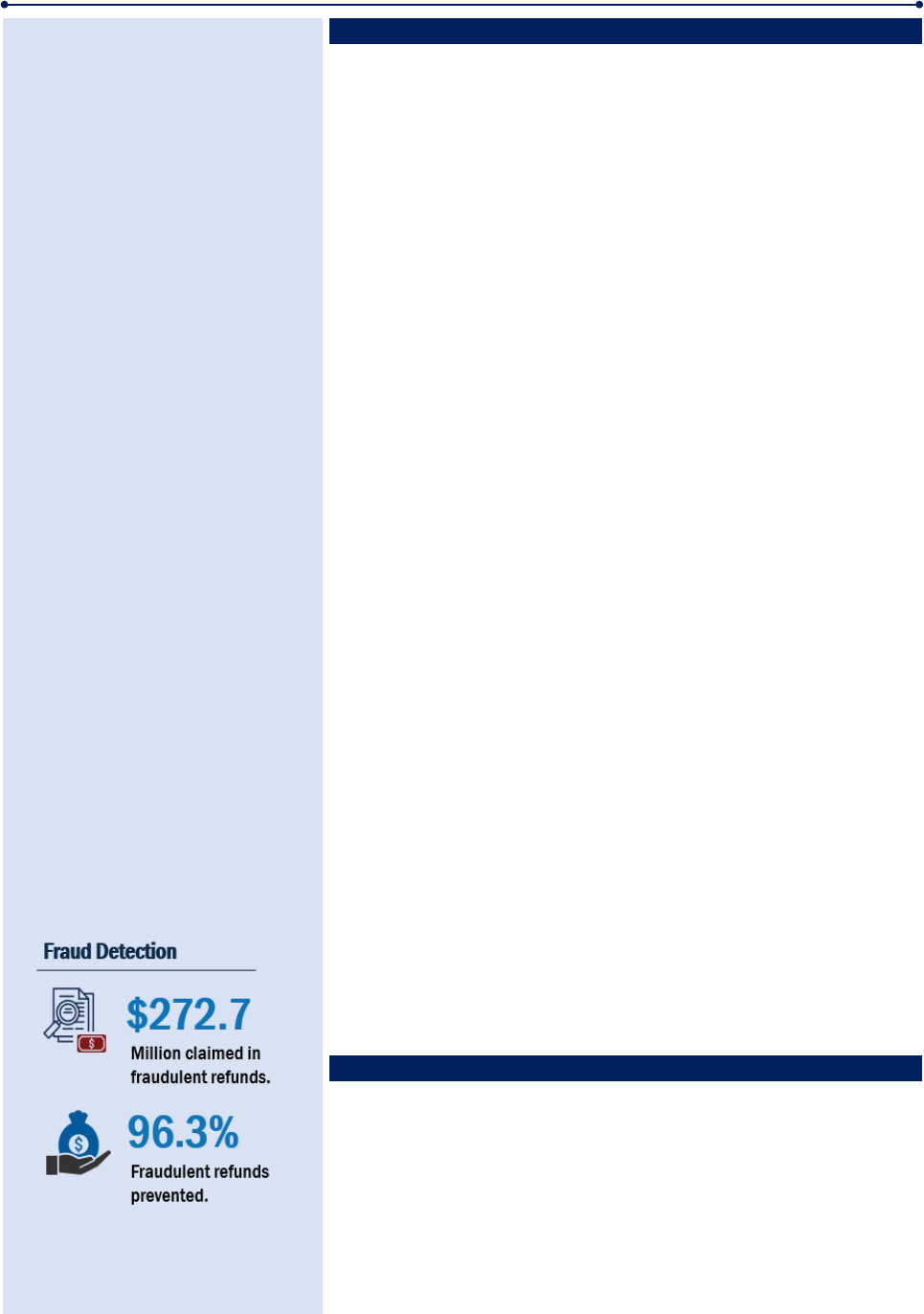
HIGHLIGHTS: Interim Results of the 2024 Filing Season
Final Audit Report issued on April 30, 2024 Report Number 2024-408-024
Why TIGTA Did This Audit
This audit was initiated to provide
selected information related to the
IRS’s 2024 Filing Season. The
overall objective of this review was
to evaluate whether the IRS timely
and accurately processed
individual paper and electronically
filed (e-filed) tax returns during the
2024 Filing Season.
Impact on Tax Administration
The annual tax return filing season
is a critical time for the IRS because
this is when most individuals file
their income tax returns and
contact the IRS if they have
questions about specific tax laws
or filing procedures.
The IRS began processing Tax
Year 2023 individual tax returns
on January 29, 2024. During
Calendar Year 2024, the IRS
expects to receive 167.1 million
individual income tax returns.
The total e-file volume is projected
to increase by 3.7 million
(2.4 percent) in Calendar
Year 2024.
In addition, the IRS’s fraud
detection processes continue to
prevent the issuance of a
significant amount of fraudulent
refunds.
What TIGTA Found
As of March 2, 2024, the IRS received more than 54 million tax
returns, of which 52.8 million (97.7 percent) were e-filed. The IRS also
issued refunds totaling $115.5 billion. In addition, as of this same
date, the IRS received more than 1.1 million Free File returns, which is
a 14 percent increase as of the same period during the 2023 Filing
Season.
TIGTA’s review of the IRS’s business rules determined that 44 of the
56 rules are accurately rejecting tax returns or were intentionally
disabled. Two business rules were incorrectly rejecting tax returns,
and 10 business rules had either low or no rejections. As such, TIGTA
will continue to monitor them throughout the remainder of the filing
season. TIGTA’s review of the accepted e-filed tax returns identified
no concerns that tax returns with the conditions described in the
56 business rules were accepted erroneously for processing.
The IRS continues to increase the number of fraudulent tax returns
detected and stopped from entering the tax processing system,
i.e.
,
rejecting e-filed tax returns and preventing paper tax returns
from posting. In addition, as of February 24, 2024, the IRS reported
that it identified 32,616 tax returns with approximately $272.7 million
claimed in fraudulent refunds and prevented the issuance of
$262.7 million (96.3 percent) of those refunds.
In addition, the IRS provides assistance to millions of taxpayers via its
website (IRS.gov), telephone, and social media platforms as well as
face-to-face assistance at its Taxpayer Assistance Centers, Volunteer
Income Tax Assistance sites, and Tax Counseling for the Elderly sites.
Finally, the IRS offers taxpayers the ability to obtain information using
their mobile devices. For example, the IRS uses common social
media platforms to share the latest information on tax changes, scam
alerts, initiatives, and products and services.
As of March 2, 2024, taxpayers made 18.4 million total attempts to
contact the IRS by calling the various customer service toll-free
telephone assistance lines. The IRS reports that 4.1 million calls were
answered with automation, and telephone assistors answered nearly
4.3 million calls and provided a 91 percent Level of Service with a
2-minute Average Speed of Answer. The Level of Access, which
TIGTA previously developed because the IRS’s Level of Service
measure did not reflect overall call demand, was 51.2 percent.
What TIGTA Recommended
This report was prepared to provide interim information only.
Therefore, no recommendations were made in this report.

U.S. DEPARTMENT OF THE TREASURY
WASHINGTON, D.C. 20024
TREASURY INSPECTOR GENERAL
FOR TAX ADMINISTRATION
April 30, 2024
MEMORANDUM FOR: COMMISSIONER OF INTERNAL REVENUE
FROM: Matthew A. Weir
Acting Deputy Inspector General for Audit
SUBJECT: Final Audit Report – Interim Results of the 2024 Filing Season
(Audit No.: 2024408023)
This report presents the results of our review to evaluate whether the Internal Revenue Service
timely and accurately processed individual paper and electronically filed tax returns during the
2024 Filing Season. This review is part of our Fiscal Year 2024 Annual Audit Plan and addresses
the major management and performance challenges of
Tax Law Changes
,
Managing IRA
Transformation Efforts
,
and
Taxpayer Service
.
This report was prepared to provide information only. Therefore, we made no
recommendations in the report. However, we provided Internal Revenue Service management
officials with an advance copy of this report for review and comment prior to issuance.
If you have any questions, please contact me or Diana M. Tengesdal, Assistant Inspector General
for Audit (Returns Processing and Account Services).

Interim Results of the 2024 Filing Season
Table of Contents
Background .....................................................................................................................................Page 1
Results of Review .......................................................................................................................Page 3
Processing Tax Returns
Individual Tax Return Receipts and Number of Refunds
Issued Decreased Slightly From the 2023 Filing Season .......................................Page 3
Detecting and Preventing Tax Refund Fraud
Fraud Detection Processes Continue to Prevent and Detect
the Issuance of Millions of Dollars in Fraudulent Refunds ...................................Page 7
Providing Customer Service
IRS Customer Service Initiatives
.....................................................................................Page 9
Appendices
Appendix I – Detailed Objective, Scope, and Methodology ................................Page 15
Appendix II – Treasury Inspector General for Tax Administration
Audits of Inflation Reduction Act of 2022 Tax Law Changes ..............................Page 17
Appendix III – Electronic Filing Business Rules ........................................................Page 18
Appendix IV – Tax Return Errors Resolved Using the FixERS Tool ...................Page 23
Appendix V – Glossary of Terms ....................................................................................Page 26
Appendix VI – Abbreviations ...........................................................................................Page 29
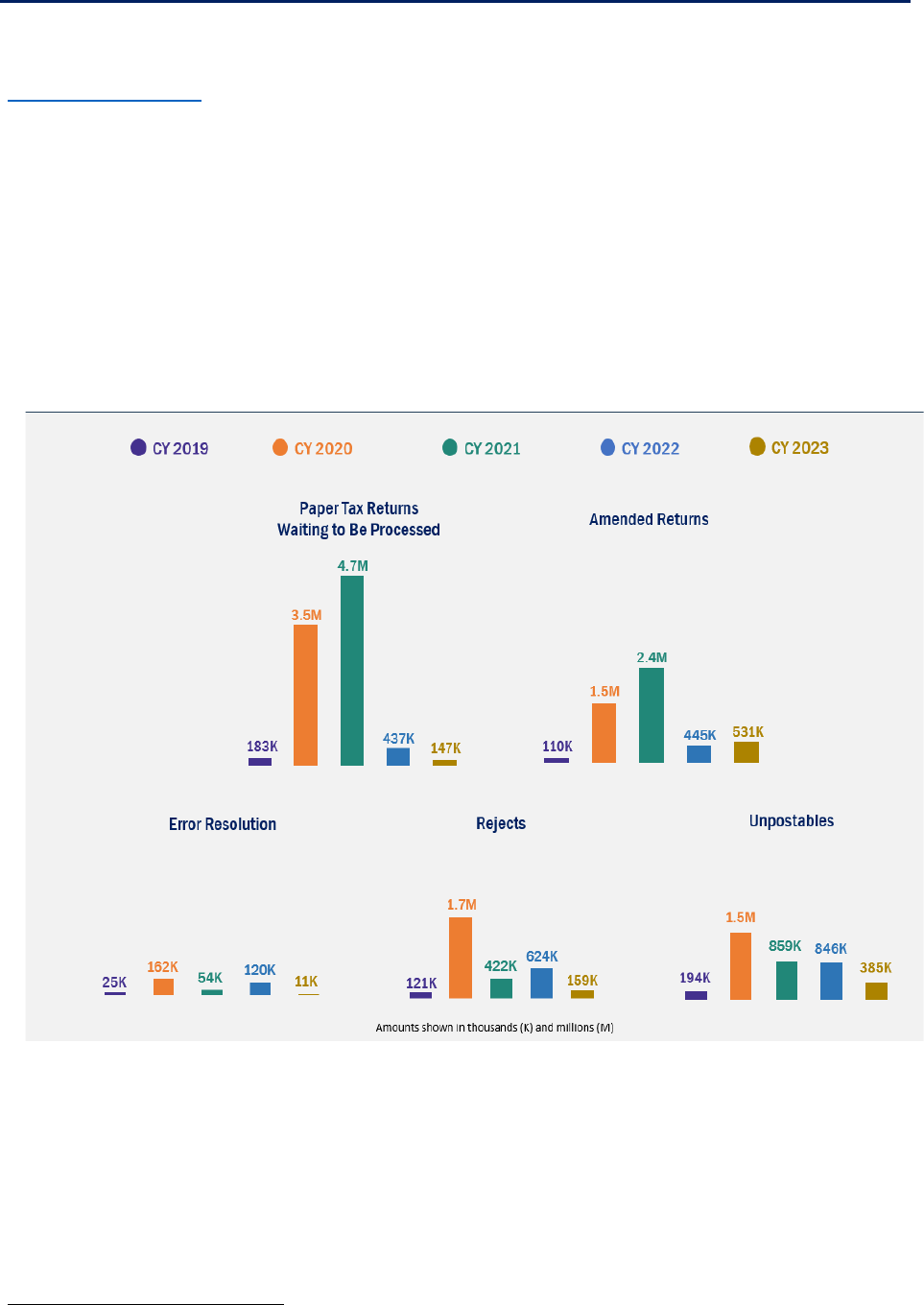
Page 1
Interim Results of the 2024 Filing Season
Background
The annual tax return filing season is a critical time for the Internal Revenue Service (IRS)
because it is when most individuals file their income tax returns and contact the IRS if they have
questions about specific tax laws or filing procedures.
1
While the IRS has reduced most
inventories at or near pre-Pandemic levels, the unpostable and amended tax return inventories
remain at higher levels. Figure 1 provides a comparison of individual tax return inventory levels
in various stages of processing that the IRS normally carried into the subsequent years’ filing
season compared to inventory levels carried into the 2024 Filing Season.
Figure 1: Comparison of Individual Return
Inventory Carried Over to the Next Filing Season
Source: IRS Filing Season Statistics Report for the week ending December 28, 2019; IRS inventory
numbers provided to the Treasury Inspector General for Tax Administration (TIGTA) for the weeks
ending December 29, 2020, December 28, 2021, December 30, 2022, and December 29, 2023;
and the Customer Account Services Form 1040X Consolidated Inventory Report for the weeks
ending December 28, 2019, December 26, 2020, January 1, 2022, December 31, 2022, and
December 30, 2023. CY = Calendar Year. Amended Returns = Form 1040-X, Amended U.S. Individual
Income Tax Return.
1
See Appendix V for a glossary of terms.

Page 2
Interim Results of the 2024 Filing Season
Key tax law changes affecting the 2024 Filing Season
One of the continuing challenges the IRS faces each year in processing tax returns is the
implementation of new tax law changes as well as changes resulting from expired tax provisions.
The primary legislation affecting the 2024 Filing Season is the
Inflation Reduction Act of 2022
(IRA), signed into law on August 16, 2022.
2
While many IRA provisions have been implemented
since being signed into law, a small number of provisions affect individual tax filers for
Tax Year 2023. Figure 2 identifies the three provisions most relevant to the 2024 Filing Season
and provides the estimated tax impact for each provision for Calendar Years 2024 through 2027.
Figure 2: Summary of IRA Provisions Affecting the 2024 Filing Season
Provision Overview of Related Provisions
Tax Impact
Calendar
Years
2024 – 2027
Energy Efficient Home
Improvement Credit
(13301)
Renamed and replaced the existing Nonbusiness Energy
Property Credit and extended the credit to property placed in
service through December 31, 2032.
$5.3 billion
Residential Clean
Energy Credit (13302)
Renamed and replaced the existing Residential Energy
Efficient Property Credit and increased the credit rate to 30
percent for property placed into service beginning in Tax Year
2022.
$9.3 billion
Alternative Fuel
Refueling Property
Credit (13404)
Modified the existing credit for certain refueling property
placed into service after Calendar Year 2022.
$621 million
Source: The IRA and the Joint Committee on Taxation JCX-18-22.
We have separate audits that will address the IRS’s implementation of Clean Vehicle Credits,
Elective Payments and Credit Transferability, and the Direct File Pilot Program.
3
In addition, we
are monitoring potential legislation such as the
Tax Relief for American Families and Workers
Act, 2024
. If enacted, the legislation would increase the refundable portion of the Child Tax
Credit (CTC) from $1,400 to $1,800 for Tax Year 2023, $1,900 for Tax Year 2024, and up to $2,000
for Tax Year 2025. Annual inflation increases would impact the credit beginning after Tax
Year 2023. During recent testimony, the IRS Commissioner stated that if the legislation is
enacted, it will take six to 12 weeks for the IRS to implement the changes and complete the
adjustments to tax accounts.
4
Additionally, the Commissioner expects only 10 percent of
households will be affected by the adjustment, which will allow the IRS to complete the
adjustments quickly.
TIGTA reports on IRS Strategic Operating Plan and new organizational structure
In March 2024, TIGTA reported that the IRS publicly released its Strategic Operating Plan on
April 6, 2023, noting that the plan outlines how the IRS will deliver transformational change for
2
Pub. L. 117-169, 136 Stat. 1818.
3
See Appendix II for a list of TIGTA audits related to IRA tax law changes.
4
Hearing with Commissioner of the Internal Revenue Service, Daniel Werfel Before the H. Comm. on Ways and
Means
, 118th Cong. (2024).
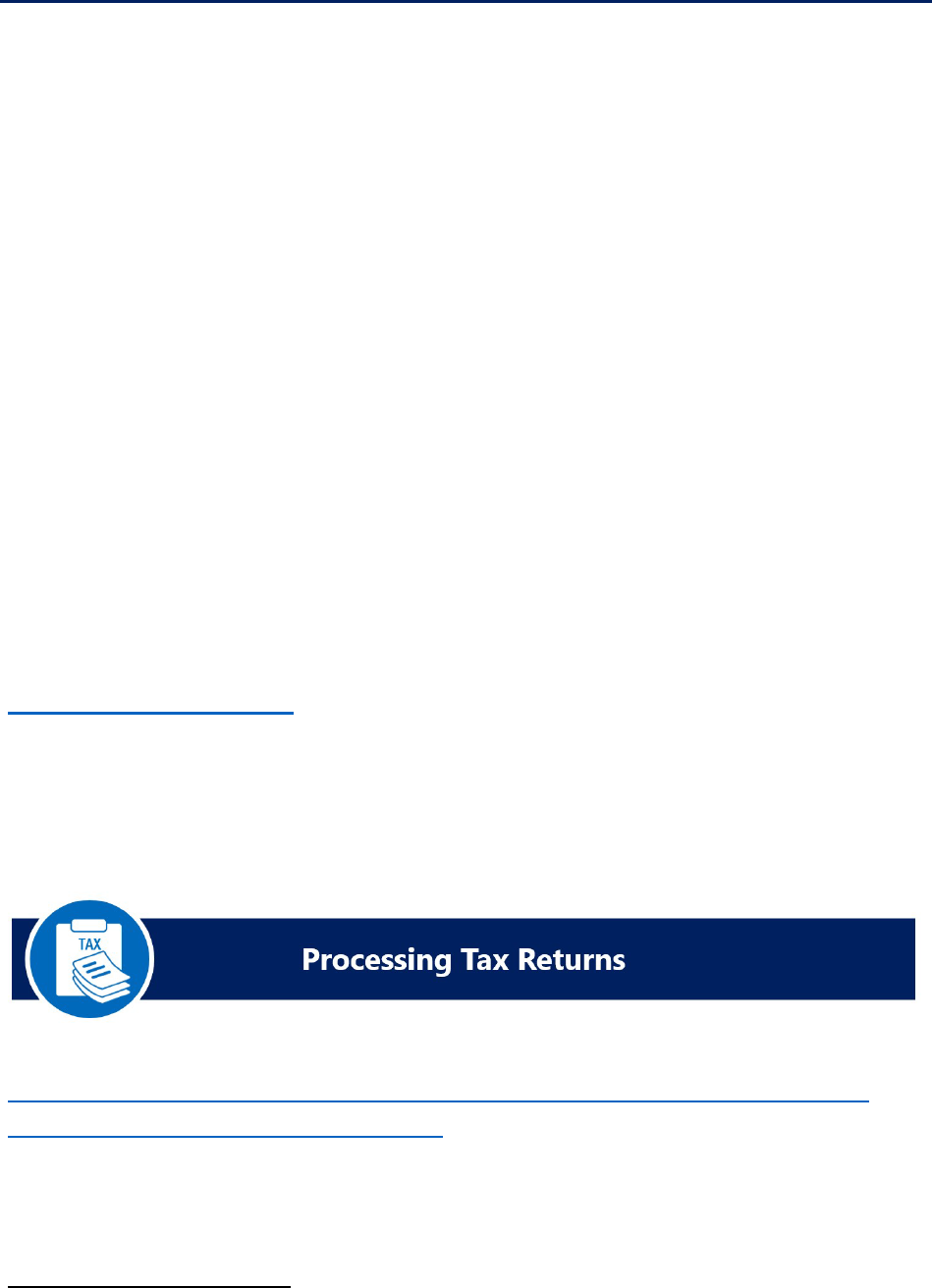
Page 3
Interim Results of the 2024 Filing Season
taxpayers.
5
The Strategic Operating Plan outlines five transformation objectives, which are
comprised of 42 initiatives. These initiatives outline how the IRS plans to provide best-in-class
customer service and transform how taxpayers interact with the IRS, modernize technology and
analytics, reduce the Tax Gap by focusing on taxpayers with complex filings and high-dollar
noncompliance, and become an employer of choice.
In addition to the standup of the Transformation and Strategy Office, on December 13, 2023, the
IRS Commissioner announced a new leadership structure noting this was a step designed to
reflect the IRS’s new transformation goals. The new structure, which became effective
April 7, 2024, will help the IRS work efficiently as an agency and ensure that progress keeps
moving forward. The IRS’s new organizational structure features a single deputy IRS
Commissioner and four new IRS chief positions.
As was announced in December 2023, these changes create more specialization at the top of
the IRS’s organizational chart. According to the IRS, the new structure will allow for more
specialization on emerging priorities in the transformation work while strengthening the senior
leadership team’s oversight capability and flexibility on pressing tax administration issues. One
of the four chiefs reporting to the Deputy Commissioner is the Chief, Taxpayer Services. This
position will be responsible for many of the major taxpayer service functions currently handled
by the Wage and Investment Division, including the filing season work and taxpayer-facing
operations such as toll-free operations, tax return processing centers, Taxpayer Assistance
Centers (TAC), tax forms, taxpayer correspondence, and publication development.
Results of Review
This report presents the interim results of our review to evaluate whether the IRS is timely and
accurately processing Tax Year 2023 individual paper and electronically filed (e-filed) tax returns.
The results are presented as of several dates between January 29, 2024, and March 30, 2024,
depending on when the information was available.
Individual Tax Return Receipts and Number of Refunds Issued Decreased
Slightly From the 2023 Filing Season
The IRS began processing individual tax returns on January 29, 2024. During
Calendar Year 2024, the IRS expects to receive up to 167.1 million (nearly 9.5 million paper and
157.6 million e-filed) individual income tax returns. The total e-file volume is projected to
5
TIGTA, Report No. 2024-IE-R010,
Inflation Reduction Act: Continued Assessment of Transformation Efforts –
Evaluation of Fiscal Year 2023 Delivery of Initiatives
(Mar. 2024). This review is part of TIGTA’s continued assessment
of the IRS’s transformation efforts.

Page 4
Interim Results of the 2024 Filing Season
increase by 3.7 million (2.4 percent) in Calendar Year 2024. Figure 3 presents comparative
statistics as of March 2, 2024. The statistics shown for the 2023 Filing Season represent a start
date of January 23, 2023.
Figure 3: Comparative Filing Season Statistics
Cumulative Filing Season Data
2023 Actual 2024 Actual
%
Change
Individual Income Tax Returns
Total Returns Received (000s) 54,948 54,030 -1.7%
Paper Returns Received
(000s)
1,350 1,235 -8.5%
E-Filed Returns Accepted
(000s)
53,598 52,795 -1.5%
Practitioner-Prepared (000s)
25,210
24,516
-2.8%
Home Computer (000s)
28,387 28,279 -0.4%
Free File (000s)
(in the Home Computer total)
1,006 1,147 14.0%
Percentage of Returns E-Filed 97.5% 97.7% 0.2%
Refunds
Total Number Refunds Issued
(000s)
42,040 36,288 -13.7%
Total Dollars
$127.3 billion $115.5 billion -9.3%
Average Refund Amount
$3,028 $3,182 5.1%
Total Number of Direct Deposits
(000s)
39,907 35,369 -11.4%
Total Direct Deposit Dollars
$124.3 billion $114.7 billion -7.7%
Source: Filing Season Weekly Report for 2023 Filing Season figures are through March 3, 2023, and
2024 Filing Season figures are through March 2, 2024. Totals and percentages shown are rounded.
While e-file volumes decreased by 1.5 percent, the number of returns filed through the IRS Free
File Program increased by 14 percent when compared to the same period during the 2023 Filing
Season. We also observed the total number of refunds issued and total dollars decreased by
13.7 percent and 9.3 percent, respectively, when compared to the same period during the
2023 Filing Season. This slight decrease can be attributed to the filing season starting one week
later in Calendar Year 2024 than it did in Calendar Year 2023. In addition, taxpayers may have
delayed filing due to anticipated legislative changes. As of March 30, 2024, e-file volumes have
surpassed the levels they were at as of March 31, 2023. We are currently conducting separate
reviews of both the IRS’s Direct File Pilot and Free File Programs. We plan to issue an interim
report for the Direct File Pilot Program in May 2024 and a final report later in Calendar
Year 2024. The final report will continue to evaluate the volume and accuracy of tax returns
submitted through the Direct File tool as well as the costs to implement the Direct File tool
during the 2024 Filing Season. We will report on the IRS’s Free File Program later in
Calendar Year 2024.
6
Individual tax return inventories
The IRS establishes timeliness goals for its various tax return processing programs that reflect
6
TIGTA, Audit No. 2024408011,
Direct File Pilot Program
and TIGTA, Audit No. 202340028,
Free File Program –
Follow-Up
.

Page 5
Interim Results of the 2024 Filing Season
the desired number of days it should take to work a tax return from receipt in the program’s
inventory. Figure 4 provides the inventory levels in key tax return processing programs as of
March 2, 2024, along with the percentage of the inventory that is aged and the program’s
timeliness goal. The figures provided for paper tax returns and Error Resolution inventories
show work received during Calendar Year 2024 and do not include any carryover work from
previous filing seasons. The figures provided for Rejects, Unpostables, and Amended Returns
represent work that could have been received during calendar years prior to 2024,
i.e.
, Tax
Years 2020 through 2022 returns that have not completed processing, as well as Tax Year 2023
and prior work received during Calendar Year 2024.
Figure 4: Age of Tax Return Processing Inventories
Type of Work Remaining
Week Ending
March 2, 2024
Percentage
Aged
Aged Criteria
Paper Tax Returns 284,586 None N/A
Error Resolution 151,517 0.4 percent Over 5 days
Rejects 496,141 3.4 percent Over 60 days
Unpostables 432,672 43.8 percent
Ranges from more
than 3 weeks to
more than 15 weeks
Amended Returns Worked
by the Submission
Processing Function
455,463 73.1 percent More than 30 days
Amended Returns
Worked
by the Accounts
Management Function
502,368 63.1 percent More than 44 days
Source: IRS-provided weekly inventory levels for the week ending March 1, 2024,
Submission Processing 1040X Inventory Report for the week ending March 1, 2024,
Accounts Management Inventory Report for the week ending March 2, 2024, and Customer
Account Services Form 1040X Consolidated Inventory Report for the week ending
March 2, 2024.
In March 2024, we reported that concerns remain with the inventories of amended tax returns
remaining to be worked, which are significantly above the pre-Pandemic levels.
7
The Accounts
Management function does not set goals specifically for amended individual tax returns
inventories. In our discussions with IRS management, they indicated that the inventories of
amended individual returns remained high because of high attrition and staffing shortages. As
of April 2024, the IRS Submission Processing function estimates that amended individual tax
return inventories will not be back to pre-Pandemic levels until December 2024.
The Accounts Management function surpassed its original hiring goal of 6,431 employees and
increased its target to 6,831. As of March 2, 2024, the Accounts Management function has hired
6,820 employees or 106 percent of its original goal of 6,431. This increase in staff should help
the IRS to decrease the amended tax return inventories discussed previously.
7
TIGTA, Report No. 2024-406-020,
The IRS Continues to Reduce Backlog Inventories in the Tax Processing Centers
(Mar. 2024).

Page 6
Interim Results of the 2024 Filing Season
In contrast, the IRS Submission Processing function is not meeting its hiring goal, but it is
making progress towards that goal. As of March 5, 2024, the Submission Processing function
has onboarded 62 percent of its goal of 3,600 employees. The IRS Submission Processing
function has needed to alter its hiring strategies and take other actions to help balance work
across the Tax Processing Centers. For example, during the 2024 Filing Season, the IRS is
redirecting taxpayers in certain States to mail their tax return to the Austin Tax Processing
Center instead of the Kansas City Tax Processing Center. In addition, the IRS continues to use
Direct Hiring Authority to assist with meeting its hiring goals. We are conducting a separate
review of the IRS’s hiring efforts and expect to issue the report in Calendar Year 2024.
8
Evaluation of new and modified e-file business rules
The IRS uses e-file business rules to identify errors on tax returns at the time the returns are
filed. We selected 56 e-file business rules for in-depth testing that are new or were modified for
the 2024 Filing Season. Our testing evaluated whether the IRS was accurately rejecting tax
returns when applicable, and conversely whether any tax returns were erroneously accepted for
processing. For example, we selected 29 business rules created to address legislative changes
affecting the Residential Clean Energy Credit, Energy Efficient Home Improvement Credit, and
Alternative Fuel Refueling Property Credit. Appendix III of this report contains a list of the
business rules we reviewed.
As of February 9, 2024, our testing of 44 of the 56 business rules found that the majority of the
rules are accurately rejecting tax returns or were intentionally disabled. We also identified two
business rules that were not correctly rejecting tax returns and alerted the IRS of these issues on
February 7, 2024, and March 18, 2024. IRS management agreed the rules were not working as
intended and indicated they would take the necessary corrective actions to fix the programming.
In addition, 10 of the 56 business rules have either had minimal or no rejections of tax returns as
of February 9, 2024. We will continue to monitor and test rules with low or no reject counts,
re-activated rules, or newly implemented rules and will report on their accuracy later in Calendar
Year 2024.
Our review of accepted e-file tax returns identified no concerns that tax returns with the
conditions described in the 56 rules were erroneously accepted for processing. In addition, we
determined the 156 business rules that were documented as being deleted or disabled were
accurately deleted or disabled for Tax Year 2023.
Expansion of the automated Error Resolution correction tool
The IRS implemented an automated Error Resolution correction tool during the 2022 Filing
Season to shorten the time needed to resolve certain taxpayer errors that could delay their
refund as well as to reduce the risk of IRS employee error. The IRS refers to this tool as the
FixERS tool. This tool systemically replaces the steps an IRS Error Resolution employee would
take to resolve the identified tax return errors. The IRS began using the FixERS tool to address
common taxpayer errors when claiming the CTC, the Earned Income Tax Credit, the Child and
Dependent Care Credit (CDCC), and the Recovery Rebate Credit (RRC). IRS management stated
that they chose these errors because they expected tax returns with these errors to be the most
impactful on taxpayers during the 2022 Filing Season.
8
TIGTA, Audit No. 202310812,
Improving the Hiring Process.
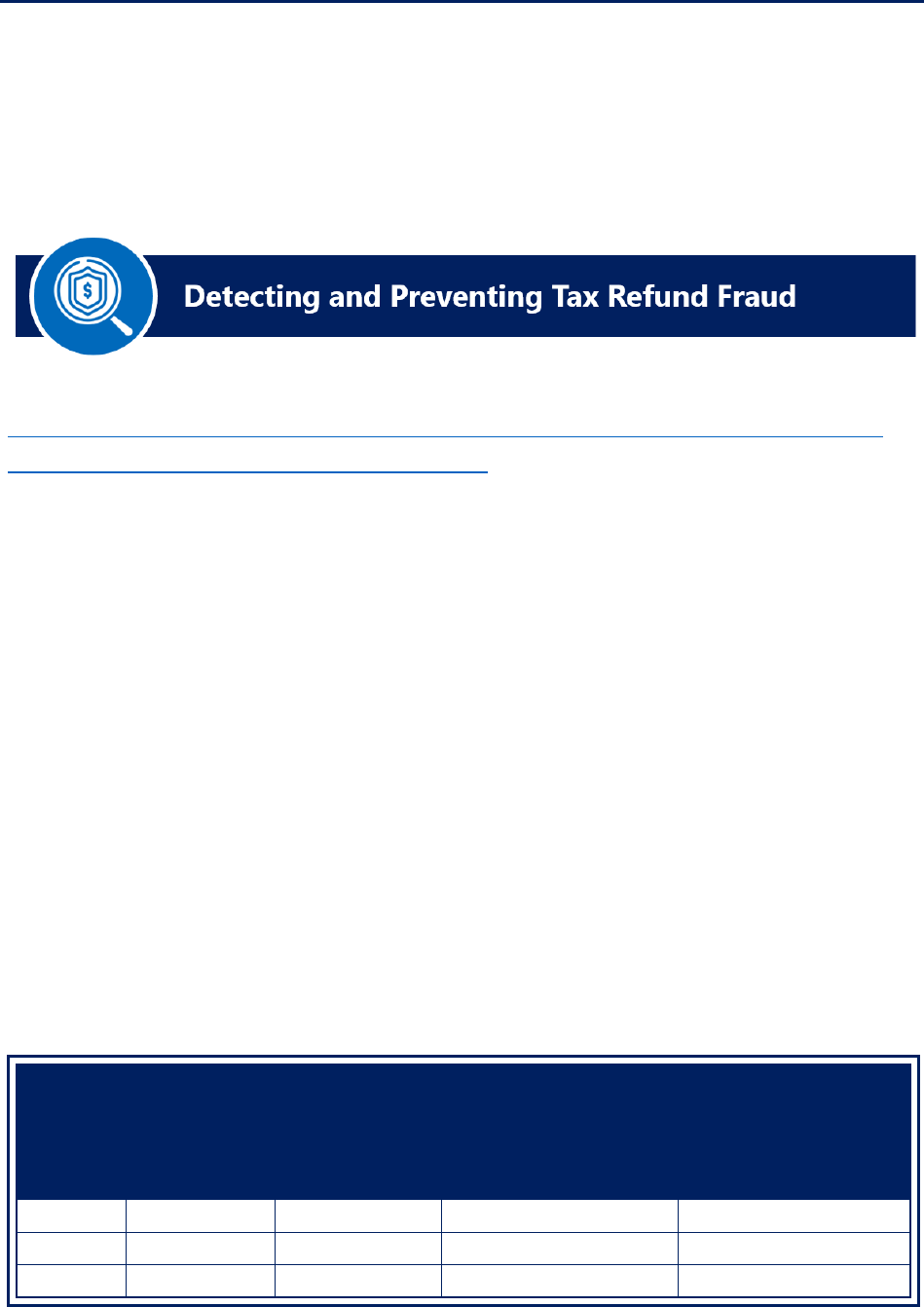
Page 7
Interim Results of the 2024 Filing Season
The IRS expanded the FixERS tool to 21 error codes for the 2023 Filing Season and added two
more codes for the 2024 Filing Season, bringing the total to 23 error codes. As of
February 29, 2024, the IRS reports that 493,072 tax returns have been placed into production for
the FixERS tool. From this population, 321,357 (65 percent) tax return errors were systemically
resolved while 171,715 (35 percent) tax return errors were resuspended for manual processing.
Appendix IV of this report contains a complete list and description for the 23 error codes.
Fraud Detection Processes Continue to Prevent and Detect the Issuance of
Millions of Dollars in Fraudulent Refunds
The IRS continues to increase the number of fraudulent tax returns detected and stopped from
entering the tax processing system,
i.e.
, rejecting e-filed tax returns and preventing paper tax
returns from posting. For example, as of December 28, 2023, the IRS has locked taxpayer
accounts of 53.7 million deceased individuals. This compares to 52.5 million accounts locked as
of January 20, 2023. When tax accounts are locked, e-filed tax returns are rejected, and paper
tax returns are prevented from posting to the Master File. According to the IRS, as of
February 29, 2024, it had rejected 31,173 fraudulent e-filed tax returns and had stopped
173 paper tax returns from posting to the Master File as a result of the deceased taxpayer
account locks.
In addition, as of February 24, 2024, the IRS reported that it identified 32,616 tax returns with
approximately $272.7 million claimed in fraudulent refunds and prevented the issuance of
$262.7 million (96.3 percent) of those refunds. This represents a decrease in the amount of
fraudulent refunds stopped when compared to the same period during the 2023 Filing Season,
although the number of refunds identified and stopped increased from the prior year. Figure 5
shows the number of fraudulent tax returns the IRS identified for Processing Years 2022, 2023,
and 2024 as well as the refund amounts that were stopped.
Figure 5: Fraudulent Tax Returns and Refunds Identified
and Stopped in Processing Years 2022, 2023, and 2024
Processing
Year
Number of
Fraudulent
Refund
Returns
Identified
Number of
Fraudulent
Refund Returns
Stopped
Amount of Fraudulent
Refunds Identified
Amount of Fraudulent
Refunds Stopped
2022 76,814 74,711 $817,400,771 $807,903,066
2023 31,079 30,730 $310,724,203 $303,718,702
2024 32,616 30,867 $272,738,111 $262,682,364
Source: IRS fraudulent tax return statistics for Processing Years 2022 (as of February 26, 2022), 2023 (as of
February 25, 2023), and 2024 (as of February 24, 2024).

Page 8
Interim Results of the 2024 Filing Season
Detection of tax returns involving identity theft
For the 2024 Filing Season, the IRS is using 282 filters to detect potential identity theft tax
returns and prevent the issuance of fraudulent refunds. In comparison, the IRS used 260 filters
for the 2023 Filing Season. These filters incorporate criteria based on characteristics of
confirmed identity theft tax returns, including amounts claimed for income and withholding,
filing requirements, prisoner status, taxpayer age, and filing history. Tax returns identified by
these filters are held during processing until the IRS can verify the taxpayer’s identity. If the
individual’s identity cannot be confirmed, the IRS removes the tax return from processing to
prevent the issuance of a fraudulent refund.
As of February 29, 2024, the IRS reported that it identified nearly 1.9 million tax returns with
refunds totaling approximately $16.5 billion for additional review as a result of the identity theft
filters. As of that same date, the IRS had confirmed 15,242 tax returns as fraudulent and
prevented the issuance of $180.5 million in fraudulent refunds. Figure 6 shows the number of
identity theft tax returns the IRS identified and confirmed as fraudulent in Processing Years 2023
and 2024 as of February 29, 2024.
Figure 6: Identity Theft Tax Returns Confirmed
Fraudulent in Processing Years 2023 and 2024
Processing Year Confirmed Identity Theft Returns
2023 12,617
2024 15,242
Source: IRS fraudulent tax return statistics for Processing
Year 2023 (as of March 2, 2023) and Processing Year 2024 (as of
February 29, 2024).
Identity theft protection
The IRS automatically issues an Identity Protection Personal Identification Number (IP PIN) to
confirmed identity theft victims if the case is resolved prior to the start of the next filing season.
Taxpayers nationwide can also request an IP PIN directly from the IRS if they are concerned that
their personal information has been stolen and want to protect their identity when filing a
Federal tax return. The IP PIN is a six-digit number assigned to eligible taxpayers to help
prevent someone else from filing a fraudulent Federal income tax return using a taxpayer’s
Social Security Number (SSN).
9
The IP PIN is known only to the taxpayer and the IRS and acts as
an authentication number to validate the correct owner of the SSN or Individual Taxpayer
Identification Number (ITIN) listed on that tax return. This helps the IRS verify the taxpayer’s
identity when they file their tax return. Taxpayers can request an IP PIN or retrieve their existing
IP PIN by using the “Get an IP PIN” tool through IRS.gov. The IRS reports that it issued
1.1 million IP PINs to taxpayers who used this tool as of February 29, 2024.
9
Anyone who has an SSN or an ITIN and is able to verify their identity is eligible to enroll in the IP PIN program.

Page 9
Interim Results of the 2024 Filing Season
Screening of prisoner tax returns
To combat refund fraud associated with tax returns filed using prisoner SSNs, the IRS compiles a
list of prisoners (the Prisoner File) received from the Federal Bureau of Prisons and State
Departments of Corrections as well as Prisoner Update Processing System data from the Social
Security Administration. These data files are used to identify for additional screening tax returns
filed using a prisoner SSN. As of February 24, 2024, the IRS reported that it identified for
screening 15,189 potentially fraudulent tax returns filed by prisoners.
10
This represents an
increase of 1.7 percent over the number of tax returns identified during the same period of the
2023 Filing Season. Figure 7 shows the number of prisoner tax returns identified for screening
in Processing Years 2023 and 2024.
Figure 7: Prisoner Tax Returns Identified for
Screening in Processing Years 2023 and 2024
Processing Year
Number of Prisoner Tax Returns
Identified for Screening
2023
14,939
2024
15,189
Source: IRS fraudulent tax return prisoner strategy statistics
for Processing Year 2023 (as of February 25, 2023) and
Processing Year 2024 (as of February 24, 2024).
IRS Customer Service Initiatives
The IRS provides assistance to millions of taxpayers via its website (IRS.gov), telephone, and
social media platforms as well as face-to-face assistance at its TACs, Volunteer Income Tax
Assistance sites, and Tax Counseling for the Elderly sites.
Online assistance
The IRS provides easy-to-use self-assistance options that enable taxpayers to access the
information they need 24 hours a day, seven days a week. The most notable self-assistance
option is the IRS’s public Internet site, IRS.gov. The IRS reported 337.3 million visits to IRS.gov
for the 2024 Filing Season as of March 2, 2024. In comparison, the IRS reported 289.8 million
visits to IRS.gov for the 2023 Filing Season as of March 3, 2023, which is an increase of
16.4 percent. The IRS website provides a number of online tools to assist taxpayers. Figure 8
10
Tax returns filed using a prisoner’s name and Taxpayer Identification Number.

Page 10
Interim Results of the 2024 Filing Season
provides examples of these online tools along with the number of times the tool was used as of
February 24, 2024.
Figure 8: Examples of Online Tool Uses for Processing Years 2023 and 2024
(as of Week Ending February 24, 2024)
Tool Description
Number of Uses
in Processing
Year 2023
Number of Uses
in Processing
Year 2024
Interactive Tax
Assistant
A tax law resource that takes taxpayers through
a series of questions and provides them with
responses to basic tax law questions.
0.5 million 0.7 million
Where’s My
Refund?
Allows taxpayers to check the status of their
refunds using the most up-to-date information
available to the IRS.
140.7 million 163.9 million
Where’s My
Amended Return?
Allows taxpayers to check the status of their
amended return using the most up-to-date
information available to the IRS.
1.4 million 1.3 million
Source: IRS management information reports.
The
Where’s My Refund?
and the
Where’s My Amended Return?
tools are available on IRS.gov.
The
Where’s My Refund?
tool is also available on the IRS2Go mobile application. IRS2Go is a
mobile application that allows taxpayers to check the status of their tax refund, make a payment,
find free tax preparation assistance, sign up for helpful tax tips, and access IRS social media
platforms. As of February 29, 2024, the IRS reported nearly 5.2 million active users for the
IRS2Go application. In November 2023, we reported on the planned enhancements the IRS had
for its online tools as part of the Strategic Operating Plan objectives to dramatically improve
services to taxpayers.
11
On February 5, 2024, the IRS confirmed enhancements to the
Where’s
My Refund?
tool were implemented as of January 3, 2024. These enhancements include
modernizing the
Where’s My Refund?
tool to create a consistent experience for taxpayers when
they access other IRS applications, such as online accounts, or when they call the toll-free
telephone line. The enhancements also include tailored messages with information about
common fraud and error conditions, detailed refund statuses in plain language, and notifications
indicating whether the IRS needs additional information. We plan to review these
enhancements and will include the results in our final filing season report later in Calendar
Year 2024.
The IRS also launched a public-facing dashboard on its website, called the
Processing Status for
Tax Forms
, which lists the current processing statuses for general correspondence and key tax
forms
e.g.
, Form 1040,
U.S. Individual Income Tax Return
, Form 941,
Employer’s Quarterly
Federal Tax Return
, and Form 1040-X. For e-filed tax returns, the processing status reflects the
typical number of days it currently takes to process a form after receipt from the taxpayer. For
paper tax returns, the processing status reflects which month of receipt is currently being
processed. As of March 18, 2024, the IRS is currently processing paper Forms 1040 received in
March 2024.
11
TIGTA, Report No. 2024-400-006,
Final Results of the 2023 Filing Season
(Nov. 2023).

Page 11
Interim Results of the 2024 Filing Season
Finally, the IRS also allows taxpayers to create an online account, which is a safe and easy way
for individual taxpayers to view specific details about their Federal tax account. For example,
taxpayers can view the amount owed on their account, payment history, and key information
from their most current tax return filed,
etc
. There are 39.5 million IRS.gov online accounts that
have been created as of February 29, 2024.
Social media platforms
The IRS also offers taxpayers the ability to obtain information from the IRS using their mobile
devices. For example, the IRS uses common social media platforms to share the latest
information on tax changes, scam alerts, initiatives, and products and services. In addition, the
IRS provides short, informative online videos in English, Spanish, Chinese, and American Sign
Language. As of March 6, 2024, the IRS reported more than 1.3 million followers on the various
social media platforms and 31.2 million views of its social media videos.
12
Toll-free telephone level of assistance
As of March 2, 2024, taxpayers made 18.4 million total call attempts and 12.6 million net call
attempts to contact the IRS by calling the various customer service toll-free telephone assistance
lines.
13
The IRS also reports that 4.1 million calls were answered with automation, and telephone
assistors answered nearly 4.3 million calls and provided a 91 percent Level of Service with a
2-minute Average Speed of Answer. Figure 9 shows a comparison of toll-free performance for
Calendar Years 2023 and 2024, as of March 2, 2024. The Level of Access, which TIGTA
developed because the IRS’s Level of Service measure did not reflect overall call demand, was
51.2 percent.
Figure 9: Toll-Free Performance
Statistics for Calendar Years 2023 and 2024
Statistic
Filing Season
2023
2024
Assistor Calls Answered 3,840,311 4,329,437
IRS Calculated Level of Service 82.1% 91.0%
Average Speed of Answer (Minutes) 5 2
TIGTA-Developed Level of Access
14
54.0% 51.2%
Source: IRS management information reports (as of March 4, 2023, for
Calendar Year 2023 and as of March 2, 2024, for Calendar Year 2024).
12
Individuals may use more than one social media platform; therefore, it would not be appropriate to consider the
total number of followers as unique individuals.
13
Total call attempts represent calls received during all hours, open or not. This figure would include taxpayer
hang-ups prior to selecting service. Total net call attempts represent calls received during open hours after removing
transfers among product lines.
14
The Level of Access reflects the total of callers seeking assistance who receive it and is computed by taking the sum
of Assistor Calls Answered and Automated Calls Answered divided by the Total Dialed Number Attempts Open Hours.
TIGTA developed this metric in 2019 because the IRS’s Level of Service measure did not reflect overall call demand.
This is not an official IRS statistic.

Page 12
Interim Results of the 2024 Filing Season
In November 2023, TIGTA reported that the IRS met the Secretary of the Treasury’s expectations
for the 2023 Filing Season reporting a level of service average of 85.2 percent as well as
reducing the average wait time to answer a taxpayer’s call to approximately three minutes.
15
However, the report noted that improvements are needed to ensure that taxpayers receive top
quality service when contacting customer service telephone lines. TIGTA made four
recommendations, including that the IRS evaluate the availability of resources to provide quality
customer service on the telephone lines and ensure that all telephone lines that place callers on
hold provide information on tax scams as legislatively required. The IRS agreed with each of
TIGTA’s recommendations. In addition, TIGTA is conducting a review to assess the IRS’s efforts
to improve toll-free access and reduce taxpayer wait times when calling for assistance and plans
to issue a report later in Calendar Year 2024.
16
The TACs
The IRS plans to assist about 2 million taxpayers at its TACs in Fiscal Year 2024, which is an
increase of 22 percent from the number of taxpayers the IRS assisted during Fiscal Year 2023.
Figure 10 shows the number of contacts by product line at the TACs for Fiscal Years 2023 and
2024.
Figure 10: TAC Contacts for
Fiscal Years 2023 and 2024
Contacts/Product Lines
Fiscal Year
2023
Actual
2024
Projections
Tax Account Contacts 953,000
1,117,000
Form Contacts 52,000
61,000
Other Contacts 586,000
763,000
Tax Law Contacts 11,000
13,000
Totals
1,602,000
1,954,000
Source: IRS management information reports. Numbers
shown are rounded.
Insufficient staffing continues to result in the TACs not being open to provide taxpayer
assistance. As of March 4, 2024, the IRS reported that 17 of the 363 TACs were closed due to a
lack of staffing. IRS management cautioned that the operating status of the TACs can vary
day-to-day due to illness, staff leaving, or staff taking other positions within the IRS. For
example, as of March 9, 2024, 155 of the 363 TACs the IRS operated were staffed with one or
two IRS employees.
Similar to prior filing seasons, the IRS continues to use its appointment service for all TACs.
When taxpayers call to schedule an appointment, the IRS will attempt to resolve the taxpayer’s
question or provide the taxpayer with information on alternative services in order to prevent the
15
TIGTA, Report No. 2024-IE-R001,
Actions Are Needed to Improve the Quality of Customer Service in Telephone
Operations
(Nov. 2023).
16
TIGTA, Audit No. 202310017,
Taxpayer Access to Telephone Service.
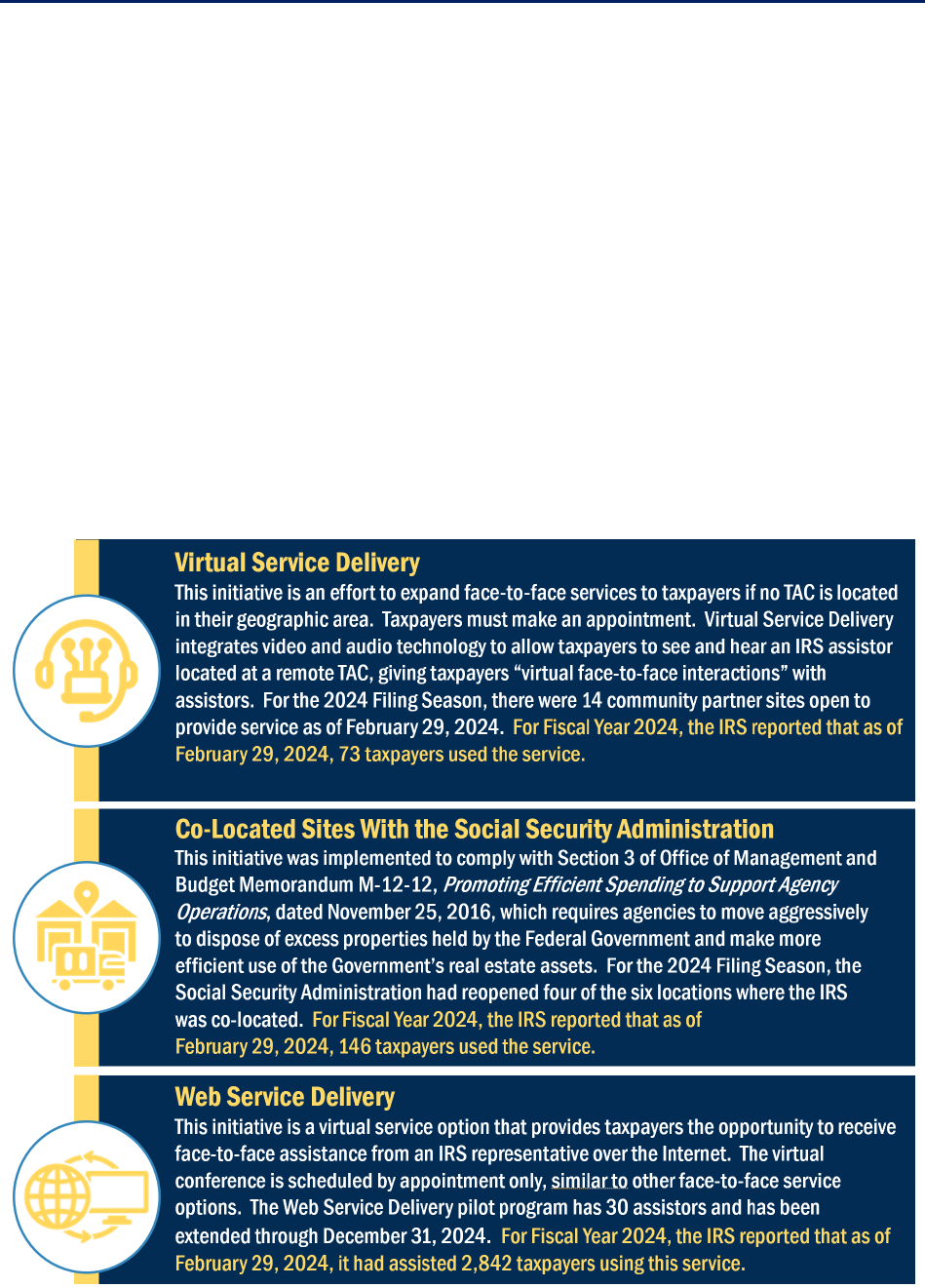
Page 13
Interim Results of the 2024 Filing Season
need for an in-person visit. As of February 24, 2024, the IRS reported that IRS employees
answered 718,446 calls to schedule an appointment. Of these, 397,962 calls necessitated that
the taxpayer schedule an appointment and visit a TAC, and 320,484 taxpayers were assisted
without having to visit a TAC.
In an effort to further assist taxpayers, on February 14, 2024, the IRS announced special
Saturday hours at more than 50 locations for face-to-face help between February and May 2024.
The IRS is offering service at select TACs on each of four monthly Saturdays beginning
February 24, 2024, and ending May 18, 2024. On these dates, the centers provide taxpayers with
in-person help between 9:00 a.m. and 4:00 p.m., and no appointments are required. The IRS
website posts information regarding the days and hours of operation and a list of services
provided as well as whether the TAC is open on one of these four Saturday dates. According to
IRS management, they have served 7,661 taxpayers in the 89 TACs that were open on
February 24, 2024, and March 16, 2024.
Finally, in addition to the services offered via the TAC appointment line and at the TACs, the IRS
also offers these additional face-to-face initiatives, as summarized in Figure 11.
Figure 11: Summary of IRS Face-to-Face Initiatives
Source: IRS management information reports.
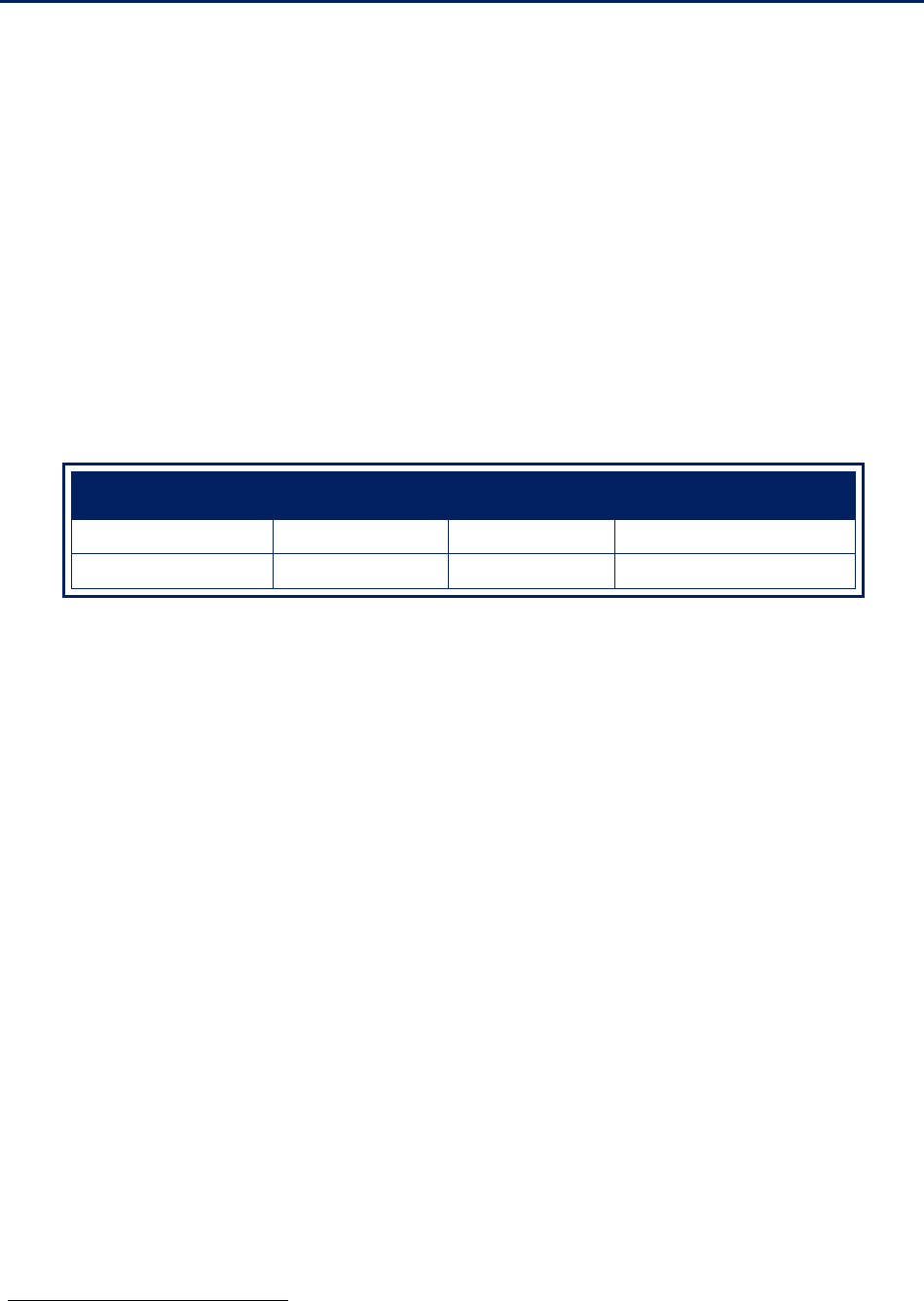
Page 14
Interim Results of the 2024 Filing Season
TIGTA is conducting a review of the quality of service provided to taxpayers at the TACs and
plans to issue a report later in Calendar Year 2024.
17
Assistance at Volunteer Program sites
The Volunteer Program plays an important role in the IRS’s efforts to improve taxpayer service
and facilitate participation in the tax system. The two main components in the Volunteer
Program are the Volunteer Income Tax Assistance and the Tax Counseling for the Elderly
programs. These programs provide no-cost tax return preparation and e-filing to underserved
taxpayer segments, including low-income, elderly, disabled, rural, limited-English-proficient, and
Native American taxpayers. As of March 4, 2024, Volunteer Program sites prepared more than
1 million tax returns at 8,261 Volunteer Program sites. Figure 12 shows the number of tax
returns prepared by volunteers for Fiscal Years 2023 and 2024, as of March 4, 2024.
Figure 12: Volunteer Program Statistics for Fiscal Years 2023 and 2024
(as of March 4, 2024)
Fiscal Year 2023 Fiscal Year 2024 Percentage Change
Tax Returns 1,005,092 1,048,048 4.3%
Sites 8,035 8,261 2.8%
Source: IRS management report showing the number of tax returns prepared for Fiscal
Years 2023 and 2024, as of March 5, 2023, and March 3, 2024, and the number of Volunteer
Income Tax Assistance sites as of March 6, 2023, and March 4, 2024. Percentages are rounded.
17
TIGTA, Audit No. 202210036,
Taxpayer Assistance Centers Generally Provided Quality Service, but Additional
Actions Are Needed to Reduce Taxpayer Burden.

Page 15
Interim Results of the 2024 Filing Season
Appendix I
Detailed Objective, Scope, and Methodology
The overall objective of this review was to evaluate whether the IRS timely and accurately
processed individual paper and e-filed tax returns during the 2024 Filing Season. To accomplish
our objective, we:
• Identified volumes of paper and e-filed tax returns received through March 2, 2024, from
the IRS Weekly Filing Season reports that provide filing season statistics and compared
the statistics to the same period for the 2023 Filing Season.
• Determined whether IRS monitoring systems indicate that individual tax returns were
being processed timely and accurately. We monitored key IRS indicators, including the
volume of tax return receipts, statistics from the IRS Filing Season Statistics Report, and
Error Resolution volumes.
• Ensured that select business rules associated with the implementation of key tax
provisions worked as intended. We evaluated the accuracy of the new business rules.
• Monitored current processing year volumes of inventory and monitored for any backlogs
of inventory from Calendar Year 2023 using IRS reports.
• Obtained information related to Submission Processing and Accounts Management
hiring and onboarding efforts.
• Identified results of the IRS tax refund fraud programs, including identity theft and
prisoner refund fraud.
• Identified results of the IRS customer service programs, including the TAC Program, the
Toll-Free Telephone Assistance Program, and the Volunteer Program.
• Identified results for the IRS’s self-assistance options, including IRS.gov and the social
media platforms.
Performance of This Review
This review was performed with information obtained from the Wage and Investment personnel
in Atlanta, Georgia, and the Wage and Investment Division Submission Processing personnel in
Covington, Kentucky, and the New Carrollton Federal Building in Lanham, Maryland, during the
period October 2023 through March 2024. We conducted this performance audit in accordance
with generally accepted government auditing standards. Those standards require that we plan
and perform the audit to obtain sufficient, appropriate evidence to provide a reasonable basis
for our findings and conclusions based on our audit objective. We believe that the evidence
obtained provides a reasonable basis for our findings and conclusions based on our audit
objective.
Major contributors to the report were Diana M. Tengesdal, Assistant Inspector General for Audit
(Returns Processing and Account Services); Sharla J. Robinson, Director; Tracy M. Hernandez,
Audit Manager; Jordan D. Bunte, Lead Auditor; Cally Sessions, Senior Auditor; Nathan J. Cabello,
Auditor; Branden L. Dreher, Auditor; Hong Cao, Information Technology Specialist;

Page 16
Interim Results of the 2024 Filing Season
Ismael Hernandez, Information Technology Specialist, and Theodore Logothetti, Information
Technology Specialist.
Data Validation Methodology
During this review, we obtained extracts from the Modernized Tax Return Database for
Processing Year 2024. Before relying on the data, we ensured that each file contained the
specific data elements we requested. In addition, we selected judgmental samples of each
extract and verified that the data in the extracts were the same as the data captured in the
Employee User Portal database. We also performed analysis on the Modernized Tax Return
Database extracts to ensure the validity and reasonableness of our data, such as ranges of dollar
values and obvious invalid values. We determined that the data were sufficiently reliable for
purposes of this report.
Internal Controls Methodology
Internal controls relate to management’s plans, methods, and procedures used to meet their
mission, goals, and objectives. Internal controls include the processes and procedures for
planning, organizing, directing, and controlling program operations. They include the systems
for measuring, reporting, and monitoring program performance. We determined that the
following internal controls were relevant to our audit objective: the process for planning,
organizing, directing, and controlling program operations for the 2024 Filing Season. We
evaluated these controls by monitoring IRS weekly production meetings, reviewing IRS
procedures, and reviewing IRS reports.
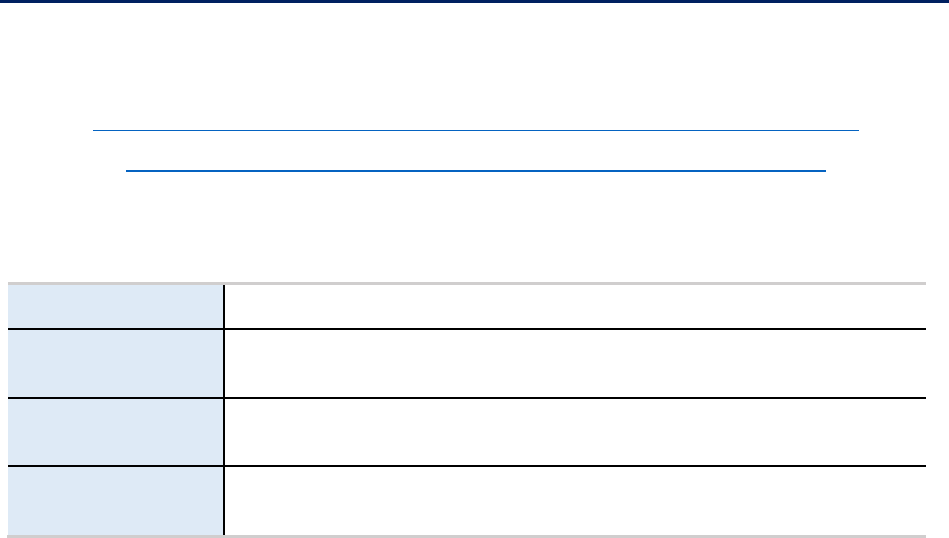
Page 17
Interim Results of the 2024 Filing Season
Appendix II
Treasury Inspector General for Tax Administration Audits
of Inflation Reduction Act of 2022 Tax Law Changes
This table presents in-process or planned TIGTA audits that will evaluate IRA provisions related
to the filing and processing of individual tax returns.
Audit Number Audit Title
2024408011 Inflation Reduction Act: Direct File Pilot Program
2024408016
Inflation Reduction Act: Registration for Elective Payment and Transfer
Elections Through the Energy Credits Online Portal
202340825
Inflation Reduction Act: Review of Implementation Efforts on the New Clean,
Commercial, and Previously Owned Vehicle Credits
Source: TIGTA Fiscal Year 2024 Annual Audit Plan.
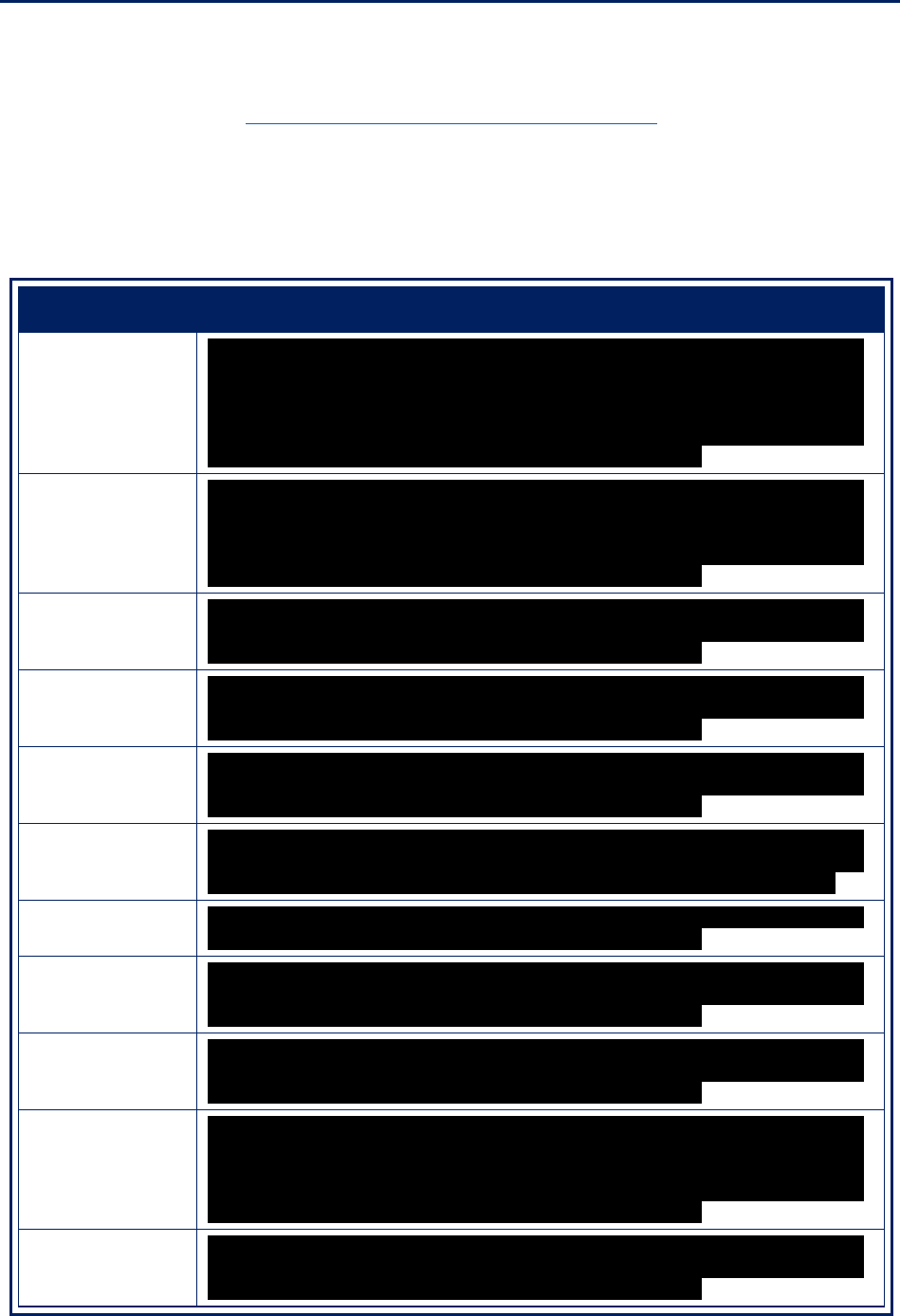
Page 18
Interim Results of the 2024 Filing Season
Appendix III
Electronic Filing Business Rules
Figure 1 presents a description of the 56 e-file business rules we reviewed that were created or
modified for the 2024 Filing Season.
Figure 1: Business Rules Reviewed for the 2024 Filing Season
Business Rule
Description
F1040-064-06 ****************************2******************************
****************************2******************************
****************************2******************************
****************************2******************************
****************************2******************************
****************************2***************.
F1040-471 ****************************2******************************
****************************2******************************
****************************2******************************
****************************2******************************
****************************2***************.
F5329-004 ****************************2******************************
****************************2******************************
****************************2***************.
F5329-005 ****************************2******************************
****************************2******************************
****************************2***************.
F5329-006 ****************************2******************************
****************************2******************************
****************************2***************.
F5695-007-04 ****************************2******************************
****************************2******************************
****************************2***************************.
F5695-030-01 ****************************2******************************
****************************2***************.
F5695-032 ****************************2******************************
****************************2******************************
****************************2***************.
F5695-033 ****************************2******************************
****************************2******************************
****************************2***************.
F5695-034 ****************************2******************************
****************************2******************************
****************************2******************************
****************************2******************************
****************************2***************.
F5695-035 ****************************2******************************
****************************2******************************
****************************2***************.
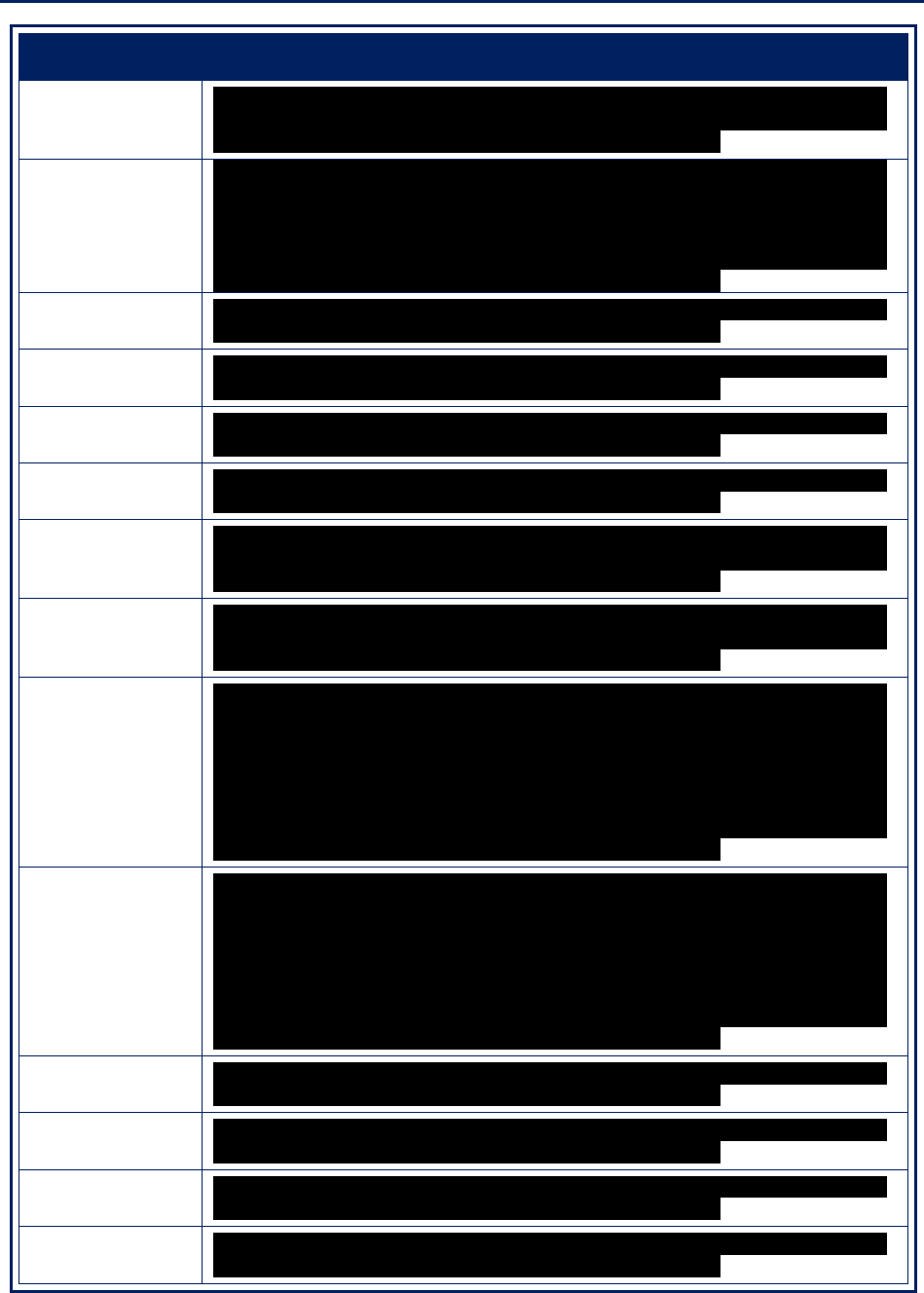
Page 19
Interim Results of the 2024 Filing Season
Business Rule
Description
F5695-036 ****************************2******************************
****************************2******************************
****************************2***************.
F5695-037
****************************2******************************
****************************2******************************
****************************2******************************
****************************2******************************
****************************2******************************
****************************2***************.
F5695-038 ****************************2******************************
****************************2***************.
F5695-039 ****************************2******************************
****************************2***************.
F5695-040 ****************************2******************************
****************************2***************.
F5695-041 ****************************2******************************
****************************2***************.
F5695-042 ****************************2******************************
****************************2******************************
****************************2***************.
F5695-043 ****************************2******************************
****************************2******************************
****************************2***************.
F5695-044 ****************************2******************************
****************************2******************************
****************************2******************************
****************************2******************************
****************************2******************************
****************************2******************************
****************************2******************************
****************************2***************.
F5695-045 ****************************2******************************
****************************2******************************
****************************2******************************
****************************2******************************
****************************2******************************
****************************2******************************
****************************2******************************
****************************2***************.
F5695-046 ****************************2******************************
****************************2***************.
F5695-047 ****************************2******************************
****************************2***************.
F5695-048 ****************************2******************************
****************************2***************.
F5695-049 ****************************2******************************
****************************2***************.
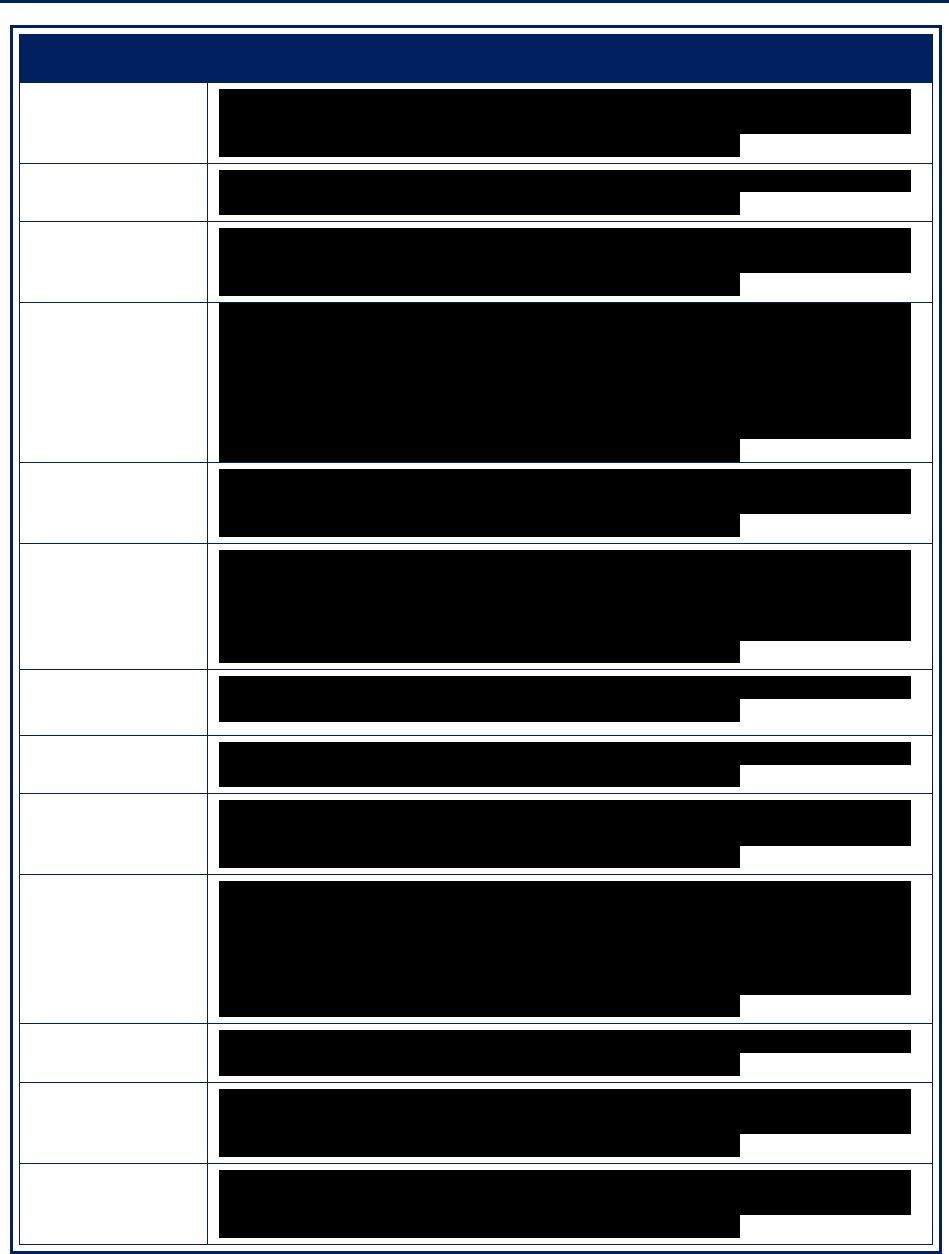
Page 20
Interim Results of the 2024 Filing Season
Business Rule
Description
F5695-050 ****************************2******************************
****************************2******************************
****************************2***************.
F5695-051 ****************************2******************************
****************************2***************.
F5695-052 ****************************2******************************
****************************2******************************
****************************2***************.
F5695-053
****************************2******************************
****************************2******************************
****************************2******************************
****************************2******************************
****************************2******************************
****************************2******************************
****************************2***************.
F5695-054 ****************************2******************************
****************************2******************************
****************************2***************.
F8283-036 ****************************2******************************
****************************2******************************
****************************2******************************
****************************2******************************
****************************2***************.
F8283-037 ****************************2******************************
****************************2***************.
F8283-039 ****************************2******************************
****************************2***************.
F8889-004 ****************************2******************************
****************************2******************************
****************************2***************.
F8889-005 ****************************2******************************
****************************2******************************
****************************2******************************
****************************2******************************
****************************2******************************
****************************2***************.
F8889-006 ****************************2******************************
****************************2***************.
F8889-007 ****************************2******************************
****************************2******************************
****************************2***************.
F8889-008 ****************************2******************************
****************************2******************************
****************************2***************.
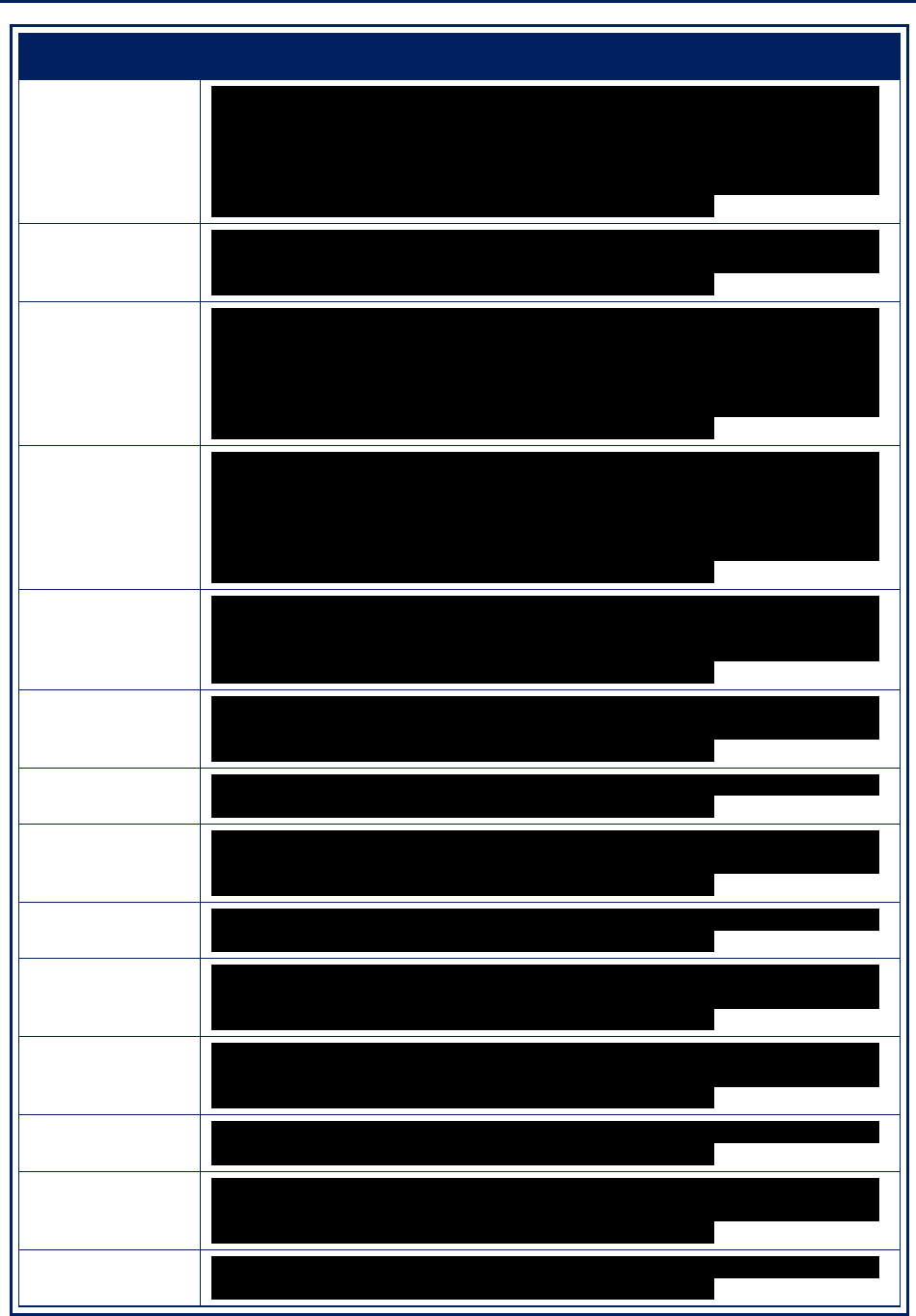
Page 21
Interim Results of the 2024 Filing Season
Business Rule
Description
F8889-009 ****************************2******************************
****************************2******************************
****************************2******************************
****************************2******************************
****************************2******************************
****************************2***************.
F8889-010 ****************************2******************************
****************************2******************************
****************************2***************.
F8889-011 ****************************2******************************
****************************2******************************
****************************2******************************
****************************2******************************
****************************2******************************
****************************2***************.
F8889-012 ****************************2******************************
****************************2******************************
****************************2******************************
****************************2******************************
****************************2******************************
****************************2***************.
F8889-013 ****************************2******************************
****************************2******************************
****************************2******************************
****************************2***************.
F8889-014 ****************************2******************************
****************************2******************************
****************************2***************.
F8889-015 ****************************2******************************
****************************2***************.
S3-F1040-024 ****************************2******************************
****************************2******************************
****************************2***************.
S3-F1040-026 ****************************2******************************
****************************2***************.
S3-F1040-028 ****************************2******************************
****************************2******************************
****************************2***************.
S3-F1040-029 ****************************2******************************
****************************2******************************
****************************2***************.
S3-F1040-156 ****************************2******************************
****************************2***************.
SC-F1040-023 ****************************2******************************
****************************2******************************
****************************2***************.
SC-F1040-024 ****************************2******************************
****************************2***************.

Page 22
Interim Results of the 2024 Filing Season
Business Rule
Description
SF-F1040-015-01 ****************************2******************************
****************************2******************************
****************************2***************.
SF-F1040-024 ****************************2******************************
****************************2***************.
SH-F1040-025 ****************************2******************************
****************************2******************************
****************************2***************.
SSE-F1040-026 ****************************2******************************
****************************2******************************
****************************2***************.
Source: IRS business rule list.

Page 23
Interim Results of the 2024 Filing Season
Appendix IV
Tax Return Errors Resolved Using the FixERS Tool
The IRS is using the FixERS tool during the 2024 Filing Season to address 23 common taxpayer
errors for individual tax return filers. Figure 1 provides a brief description of the Error Resolution
codes addressed using the FixERS tool.
Figure 1: FixERS Codes for the 2024 Filing Season
Error
Resolution
Code
Topic of
Error Resolution Code
Description
017 ITIN Status Code Sets when the ITIN Status Code is “I,” meaning it is inactive
for either the Primary, Secondary, any Dependent, or either
Child Care Credit Dependent.
029 Unclaimed Credits
*********************2**********************
*********************2**********************
*********************2**************.
034 Filing Status Code Sets when the Filing Status Code is inconsistent with the
requirements needed to claim the Filing Status. Filing Status
Codes 4, 5, and 7 require the taxpayer to also claim
dependents in order to qualify for that Standard Deduction.
075 Taxable Social Security
Verified Amount
Sets when the Taxable Social Security Verified amount is not
present. The only entries on the return are Total or Taxable
Social Security and Withholding, with the Refund equaling the
Withholding. Additionally, it will catch returns where the
taxpayer does not list Taxable Social Security; however, there
is an indication of a Lump Sum Election.
121 Excess Social
Security Withholding and
Railroad Retirement Tax
Act
Sets when the taxpayer’s figure for Excess Social Security or
Railroad Retirement Tax Act Withholding is equal to or greater
than the computer’s computation. In order to claim this
withholding, the taxpayer must have more than one employer
and the combined withholding must exceed the limitation
amounts.
214 Taxable Social
Security Benefits
Sets when the taxpayer did not correctly figure their Taxable
Social Security Benefits amount. This calculation is based on
amounts claimed in other fields of the return, including their
Gross Taxable Social Security amount.
248 Qualified Business
Income Deduction
Sets when the Qualified Business Income Deduction amount
is not supported by business income reported on the return.
280 CDCC Sets when the taxpayer’s amount for the CDCC and the
computer’s calculation for this credit differ. This can be
caused by a miscalculation by the taxpayer or by an action
taken in a previous error code.
287 Child and Other
Dependent Credit and the
Additional Child Tax
Credit (ACTC)
Sets when the difference between Child and Other Dependent
Credit and the computer’s calculation is greater than $2. It
will also generate when the difference between the
ACTC/Refundable Child Tax Credit and the computer’s
calculation is greater than $2.

Page 24
Interim Results of the 2024 Filing Season
Error
Resolution
Code
Topic of
Error Resolution Code
Description
289 Total Children Eligible for
the CTC
Sets when the Total Children Eligible for the CTC and/or total
number of dependents eligible for Credit for Other
Dependents are present, and any of Forms 8839, Qualified
Adoption Expenses, 8396, Mortgage Interest Credit, 8859,
Carryforward of the District of Columbia First-Time
Homebuyer Credit, 8834, Qualified Electric Vehicle Credit,
8912, Credit to Holders of Tax Credit Bonds, 8978, Partner’s
Additional Reporting Tax Year, or Other Credits are present,
and either the CTC and Other Dependent Credit Verified is not
present or the ACTC Verified and Refundable CTC Verified is
not present.
290 Child and Other
Dependent Credit
Sets when a math error is present between the taxpayer’s
amount for Child and Other Dependent Credit and the
computer’s amount, and the taxpayer’s amount and the
computer amount for Total Tax do not agree.
291 Residential Clean Energy
Credit and Energy
Efficient Home
Improvement Credit
Sets when a math error is present between the taxpayer’s
amount for Residential Clean Energy Credit or Energy Efficient
Home Improvement Credit and the computer’s amount, and
the taxpayer’s Total Tax Liability and the computer’s amount
for Total Tax do not agree.
298 Clean Vehicle Credit and
Previously Owned Vehicle
Credit
Sets when the Tax Period is 202312 and later and one or
more invalid conditions exist, such as the taxpayer’s Clean
Vehicle Credit or Previously Owned Vehicle Credit amounts do
not agree with the computer’s amount, non-matching entries
on Form 8936, Clean Vehicle Credits, and Schedule A (Form
8936), or the presence of Special Processing Code ‘R’.
328 First-Time Homebuyer
Credit
Sets when it appears the Primary and/or Secondary taxpayer
must repay their First-Time Homebuyer Credit and are not
making any payments on their return.
329 Repayment of First-Time
Homebuyer Credit
Sets when the Primary and/or Secondary taxpayer are
repaying their First-Time Homebuyer Credit; however, a math
error is present. This may occur if the Secondary taxpayer
listed their Taxpayer Identification Number on the repayment
form; however, the credit is under the Primary taxpayer’s SSN,
etc. This may also occur if they are paying over or under the
amount they owe each year.
336 Earned Income Credit
(EIC)
Sets when the taxpayer is claiming the EIC and an error is
present with either the Primary, Secondary, or a Dependent’s
Taxpayer Identification Number Assignment Date, i.e., the
Taxpayer Identification Number Assignment Date is later than
the due date of the return. This may also generate if
Schedule EIC is present and EIC Amount is significant and the
number of EIC SSNs present does not equal the computer’s
amount in Qualified EIC Dependent Number.
337 EIC With Schedule EIC Sets when the amount claimed for the EIC differs from the
computer amount and Schedule EIC is present, meaning
dependents are claimed for the credit.
338 EIC Without Schedule EIC Sets when the amount for EIC differs from the computer
amount and Schedule EIC is not present, dependents are not
being claimed for the credit.

Page 25
Interim Results of the 2024 Filing Season
Error
Resolution
Code
Topic of
Error Resolution Code
Description
344 ACTC not Tax Year 2021 Sets when the Tax Period is not Tax Year 2021, the taxpayer
amount for the ACTC differs from the computer’s amount, and
Total Payments is not equal to Total Payments Computer.
345 ACTC Tax Year 2021 This affects Tax Year 2021 only. Generates when the
taxpayer’s amount for the ACTC differs from the computer’s
amount, and Total Payments is not equal to Total Payments
Computer.
350 RRC Tax Year 2021 This affects Tax Year 2021 only. Generates when the
taxpayer’s amount for the RRC differs from the computer’s
amount, and Total Payments does not equal Total Payments
computer. The taxpayer did not correctly report their RRC
amount.
363 CDCC Tax Year 2021 This affects Tax Year 2021 only. Sets when the taxpayer’s
amount for the CDCC and the computer’s calculation for this
credit differ. This can be caused by a miscalculation by the
taxpayer or by an action taken in a previous error code. For
example, if a dependent is disqualified in error code 017
because their ITIN is inactive, and this dependent is claimed
for the CDCC, it will change the calculation causing a math
error to set. This may also be caused by taxpayer failure to
check the Principal Abode Box on Form 2441, allowing the
refundable portion of this credit.
601 Total Tax Exceeds
50 Percent of Adjusted
Gross Income
Generates when the taxpayer’s Total Tax reported exceeds
50 percent of their adjusted gross income. Tax examiners are
instructed to check for transcription errors and verify the tax
claimed.
Source: IRS management-provided list of error codes and descriptions.

Page 26
Interim Results of the 2024 Filing Season
Appendix V
Glossary of Terms
Term Definition
Adjusted Gross Income
Gross income minus adjustments to income. Gross income includes wages,
dividends, capital gains, business income, and retirement distributions as
well as other income. Adjustments to income include such items as
educator expenses, student loan interest, alimony payments, or
contributions to a retirement account.
Business Rule
Used to validate information included on e-filed tax returns for acceptance
into tax return processing. The IRS will reject e-filed tax returns from
processing when the tax return does not meet a business rule.
Child and Dependent
Care Credit
A tax credit for expenses that are paid for the care of a qualifying individual
to enable taxpayers to work or to actively look for work.
Child Tax Credit A tax credit for families with qualifying children.
Earned Income Tax Credit A refundable tax credit for low-income to moderate-income workers.
Employee User Portal
The internal IRS portal that allows employees to access IRS data and
systems, such as tax administration processing systems and financial
information systems, in a secure, authenticated session.
Error Resolution
An online computer application used by tax examiners to correct errors
identified on individual or business tax returns during processing.
Error Resolution Code
These codes validate the accuracy of tax returns during processing. When
a return is identified with an error condition, the IRS suspends the return
from processing and sends it to a tax examiner to correct the error. Once
the error is corrected, the IRS continues to process the tax return.
Filing Season
The period from January 1 through mid-April when most individual income
tax returns are filed.
Fiscal Year
Any yearly accounting period, regardless of its relationship to a calendar
year. The Federal Government’s fiscal year begins on October 1 and ends
on September 30.
Free File
A free Federal tax preparation and e-filing program for eligible taxpayers
developed through a partnership between the IRS and the Free File, Inc.
(FFI). Free File, Inc. is a group of private sector tax software companies.
Integrated Data
Retrieval System
IRS computer system capable of retrieving or updating stored information.
It works in conjunction with a taxpayer’s account records.
Level of Access
The total number of calls seeking assistance that ultimately receive
assistance from the IRS. This is computed by taking the sum of Assistor
Calls Answered and Automated Calls Answered divided by Total Dialed
Number Attempts Open Hours.

Page 27
Interim Results of the 2024 Filing Season
Term Definition
Level of Service
The primary measure of service to taxpayers. It calculates the level of
service taxpayers who call the Accounts Management function’s toll-free
telephone lines have at speaking with an assistor. Further, it is a budget
measure used to determine the resources for the toll-free telephone lines.
The IRS’s measure is titled Customer Service Representative Level of
Service.
Master File
The IRS database that stores various types of taxpayer account information.
This database includes individual, business, and employee plans and
exempt organizations data.
Modernized Tax Return
Database
The official repository of all electronic returns processed through the
Modernized e-File system.
Paper Tax Returns Waiting
to Be Processed
Tax returns that have not yet been entered into the IRS’s tax processing
system.
Prisoner File
The IRS compiles a list of prisoners received from the Federal Bureau of
Prisons and State Departments of Corrections as well as Prisoner Update
Processing System data from the Social Security Administration.
Processing Year The calendar year in which the IRS processes the tax return or document.
Rejects
Tax returns that cannot be processed, usually due to missing or incomplete
information. Tax examiners correspond with the taxpayer to clarify an entry
on a return. When the taxpayer responds, the tax examiner will resolve the
issue and the return will continue processing.
Tax Examiner
An employee located in a field office who conducts examinations through
correspondence. However, the tax examiner position is also used for many
other types of positions located in various IRS offices.
Tax Year
A 12-month accounting period for keeping records on income and
expenses used as the basis for calculating the annual taxes due. For most
individual taxpayers, the tax year is synonymous with the calendar year.
Taxpayer Assistance Center
Local offices nationwide staffed by IRS employees who are trained to
provide a variety of services including answering tax account questions,
taking cash payments, and authenticating the identity of individuals who
have been identified as potential victims of tax-related identity theft.
Taxpayer Identification
Number
A nine-digit number assigned to taxpayers for identification purposes.
Depending upon the nature of the taxpayer, it can be an Employer
Identification Number, an SSN, an Adoption Taxpayer Identification
Number, or an ITIN.
Unpostables
Transactions that will not post to the taxpayer’s account because they failed
validity checks. The unpostable condition must be resolved in order to
complete processing of the transaction.

Page 28
Interim Results of the 2024 Filing Season
Term Definition
Volunteer Program
Includes the Volunteer Income Tax Assistance program (both the Volunteer
Income Tax Assistance Grant program and the Tax Counseling for the
Elderly program). The Volunteer Program provides free tax assistance to
persons with low-to-moderate income (generally defined as within the
Earned Income Tax Credit threshold), senior citizens, persons with
disabilities, persons living in rural areas, those with limited English
proficiency, and Native Americans.

Page 29
Interim Results of the 2024 Filing Season
Appendix VI
Abbreviations
ACTC Additional Child Tax Credit
CDCC Child and Dependent Care Credit
CTC Child Tax Credit
e-file(d); e-filing Electronically File(d); Electronic Filing
EIC Earned Income Credit
IP PIN Identity Protection Personal Identification Number
IRA Inflation Reduction Act of 2022
IRS Internal Revenue Service
ITIN Individual Taxpayer Identification Number
RRC Recovery Rebate Credit
SSN Social Security Number
TAC Taxpayer Assistance Center
TIGTA Treasury Inspector General for Tax Administration

To report fraud, waste, or abuse,
contact our hotline on the web at www.tigta.gov
or via e-mail at
oi.govrep[email protected].
To make suggestions to improve IRS policies, processes, or systems
affecting taxpayers, contact us at www.tigta.gov/form/suggestions
.
Information you provide is confidential, and you may remain anonymous.
